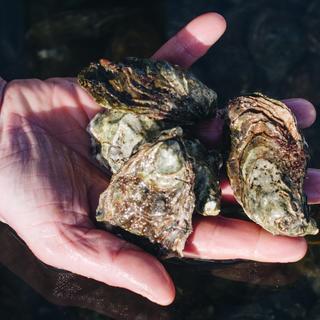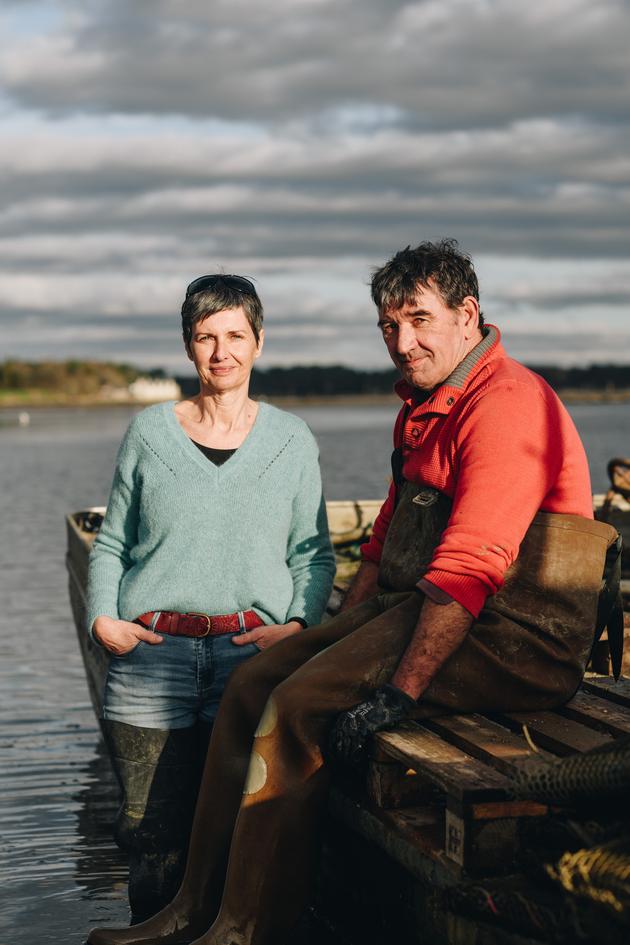


The delicate art of opening up to oysters
FeatureSome find these mollusks, with their gelatinous texture and powerful iodized taste, to be off-putting. To win over new gourmets, Tifenn and Jean-Noël Yvon, oyster farmers in Brittany, advise us to add some crunch by breading them.
Tifenn Yvon perfectly remembers her first encounter with oysters. At the time, she was a 13-year-old teenager who had come from the French island of Réunion in the Indian Ocean to spend Christmas with her grandparents in Paris. On the table, there were these strange pebble-headed shellfish for which the whole family was enthusiastic. But she recoiled. "I was repulsed by eating a raw, live animal filled with seawater," she said. "I didn't even have any that day. I didn't feel it was something that involved me. For me, it was a grown-up thing."
Today, Tifenn Yvon is 52 years old and, in front of her, on the table of her living room with its mango-colored walls, are her own oysters, shellfish that she has raised with her husband, Jean-Noël Yvon, 64, son and grandson of oyster farmers, who founded Les Huîtres de Listrec in Brittany. Along with a small building for processing and sorting seafood, their house stands facing the ria d'Etel, a river in southern Brittany that flows some 10 kilometers further into the Atlantic Ocean. That morning, the panorama was unreal. Under a bright white sun, the mist had settled over the channel. Were it not for their barge, the long, flat boat the couple uses to transport their oysters, it would have been impossible to make out the horizon. The water and sky merged into a cottony grey-blue, crossed by egrets.
For Tifenn, who became an oyster farmer in her 40s, repugnance eventually became a passion and, eventually, a profession. But can you really learn to love oysters, as she has? The answer should interest many gourmets, and even some food journalists, who have a nagging distaste for the bivalve.
In the words of Irish writer Jonathan Swift: "He is bold who first ate an oyster." It takes a lot of courage to try this sea creature. Reluctant eaters cite the slap of iodine, the brutal kiss given to the ocean, perhaps the only ingestion that evokes drowning, and the texture of the mollusk, often soft, sometimes viscous. Not to mention the appearance, for some, of spit, or even a cold gray vulva with wavy bangs. And what can we say about the myth that accompanies this seafood, reputedly capable of rising up the throat of gourmands? Wrong, of course! Just as false as its supposed aphrodisiac virtues.

Added to this are other, more concrete misgivings. Oysters have been particularly hard hit by inflation: According to INSEE (France's National Institute of Statistics and Economic Studies), their price rose by 15% in autumn 2022 compared with the previous year. Many consumers are also worried about getting sick. During the last festive season, the norovirus, which affected oysters in the Arcachon Basin (department of Gironde in western France) as well as some in Calvados and Manche in northern France, created concern throughout the country. "If social media were anything to go by, people had the impression that eating an oyster was a life-threatening experience," said an annoyed Jean-Noël, who spent several weeks trying to reassure his customers. "However, health regulations have become increasingly stringent, and regular analyses are carried out on sales sites and networks."
You have 63.04% of this article left to read. The rest is for subscribers only.
